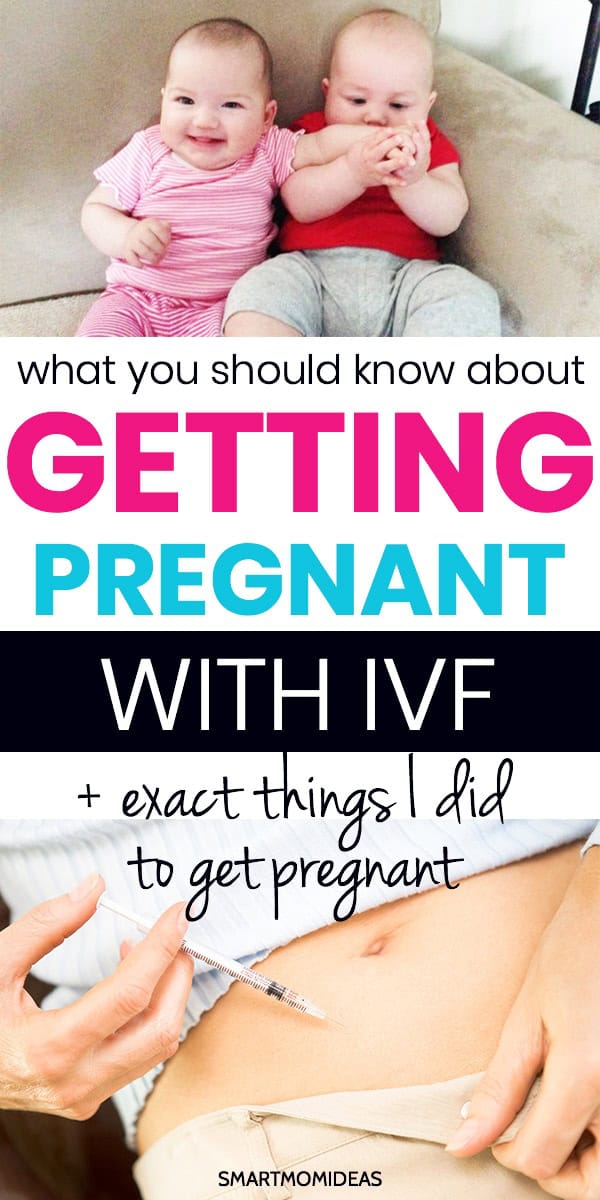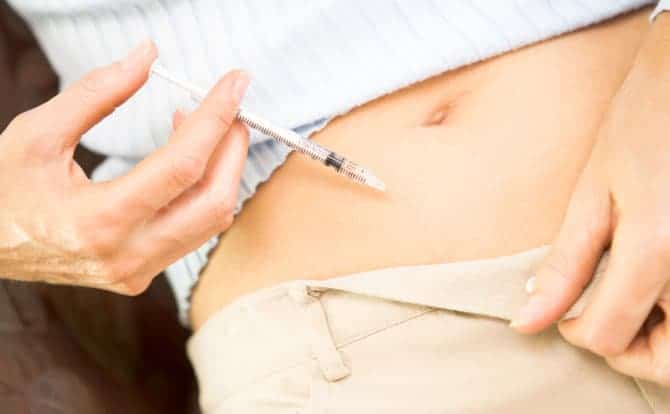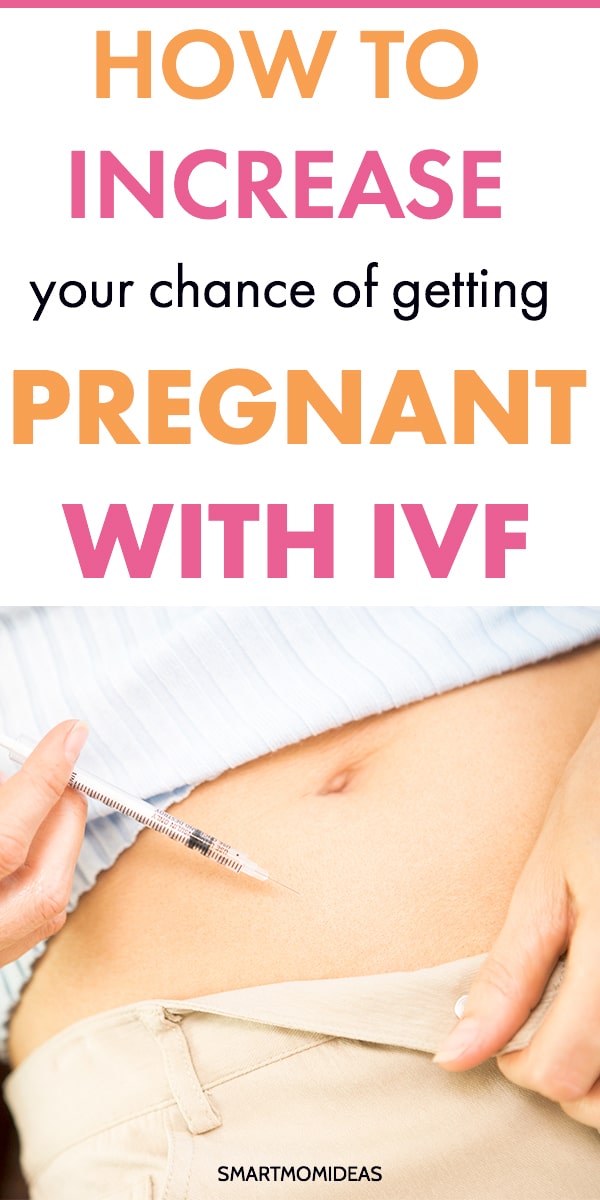Learn the IVF process for me as a mom with twins.

Right now my twins are happily playing fort after spending the day at Kindergarten.
My boy and girl twins are 5 years old and my life now is not only more noisier, busier and stressful, it’s also more joyous and more loving.
The struggle my husband and I went through to get pregnant is a distant memory for me. The person back then has no similarity to the person I am today – a mom.
But, I’m going back to that time in my life when everything was riding on that positive and then riding on my body keeping my baby(ies).
While pregnancy is one of the most natural things on this Earth, for many of us women, medical intervention is needed to help us conceive.
If you are on this road and considering IVF, I’ll go through what IVF is, the process of going through it from my perspective, and how many rounds I went though to get pregnant.
What is IVF (+ Why That Was Our Only Option)
IVF stands for in vitro fertilization. This occurs when the egg and sperm are combined outside the body. A trained medical professional puts the sperm and high quality eggs in a petri dish and waits for insemination.
Once this occurs you let the egg sit and divide. Typically you have a 5-day transfer where they insert the BEST fertilized egg/s (embryo) into the woman. It’s during those five days the doctor sees how well the egg is dividing.
About a week to 9 days later you can use a highly sensitive pregnancy test to see if the transfer took and IVF worked. Typically, you’ll have extra embryos that weren’t used in the transfer. You have the option of freezing those eggs in case this IVF round doesn’t take (Doing this initially will save you money if you end up doing IVF a second time).
For us we chose to do Intracytoplasmic sperm injection (ICSI) as this has a higher chance of pregnancy.
ICSI occurs when the doctor physically inserts one sperm into one egg. We ended up going this route as it’s beneficial for couples having male infertility issues and moves the process along when it becomes relevant that it’s a challenge for the couple.
Are there other medical interventions to use to get pregnant? Yes there are. As a couple and based on your fertility issue, you can decide which method is best for you.
The IVF Process

Before we thought of intervention, we were starting to get worried that pregnancy was going to be harder than “doing it” consistently and on high-fertile days.
We used the cervical mucus method to chart my high fertility days. But after six months or so, we knew something was wrong. This is when we went to our doctor and then to a specialist.
Once we learned about all the options, we decided to go the IVF route. Even with this, I ended up having difficulty getting pregnant and keeping the pregnancy. The doctors had to do some drastic things so we can get pregnant (I will share later!).
To start the IVF process, the woman takes fertilization medications like Gonal-F, Cetrotide or Lupron. These medications help stimulate the growth of multiple eggs. The doctors want a lot of eggs for the egg retrieval so that they can choose the best eggs for fertilization (better odds).
These fertilization medications are injectables. You inject medicine into your abdomen/belly every day for around 10 days.
Scared of needles? This 100% worked for me
I was terrified of needles. The biggest thought was the pain associated with injecting myself every day for a set time. You can have your husband or partner inject the medicine if you want, but for me, I needed the control!
What helped me was using this numbing cream.
I would dab it on my belly, wait 10 minutes and boom! No feeling and numb at the injection site. Worked like a charm.
Before the transfer you are also taking Prometrium (you insert capsules into your vagina).
The doctor monitors you with blood work and a day or two after injections are done, you have your egg retrieval. You are put under and it’s a painless procedure.
The rest is in the doctors hands. They monitor the egg/embryo growth and when it’s time for transfer, they pick the best embryo(s).
How Many IVF Rounds I Went Through to Get Pregnant
When I was going through IVF, I used a support network with a forum to connect with other IVF couples and to chart my journey through IVF.
We ended up doing three ICSI rounds and one frozen embryo round to get pregnant with our twins.
The first round the doctors probably did a standard protocol with medications and retrieval. I ended up only growing 8 eggs and that only resulted in two BB embryos. Here is how embryos are charted:
Inner Cell Mass Quality
A – many cells that are tightly packed
B – Several cells that are loosely grouped
C – very few cells
Trophectoderm Quality
A – many cells that form a cohesive layer
B – Few cells that form a loose epithelium
C – very few large cells
So the two eggs I had first transferred via ICSI were BB. This did not result in a pregnancy.
In the second round, they switched my fertilization medication, which resulted in more eggs – 14. Of those, 2 eggs were transferred and I was able to freeze two embryos.
This round, the egg quality was better: AB, B+ (not sure what the + indicated).
I was fortunate that this resulted in a pregnancy, but I ended up losing our precious baby at 7w6d.
This was hard for us. At this point it was hard for us to move on. Not only is this an expensive journey, the thought of going through another round with no success was difficult to think of.
But, after some time we both knew we had to keep going since we both desperately wanted children. So, four months later I tried again. Since we had frozen embryos, we decided to use those, but it did not result in a pregnancy.
At this time the doctor sat us down and told us our options.
He had other couples that had a similar profile as us and he did some aggressive things for them and most ended up having children.
The doctor first wanted to see if I had recurrent pregnancy loss even though I only had one miscarriage. The fact that the doctor is putting eggs in me should have a higher percent of taking, but for some reason my body wasn’t holding on to those embryos.
The first aggressive thing the doctor did for me was a uterine lining biopsy. The doctor essentially scraped my uterus to stimulate blood growth and “stir” things up.
This hurt!
The fertilization medication was the same as my previous ICSI round and it resulted in 13 eggs.
The next aggressive thing the doctor did was insert 3 embryos instead of two. So by doing this, it could have resulted in triplets. We had to think about this option when the doctor suggested it. In the end we believed in the doctor that this was our best option.
I had an AB, BB and one morula embryo.
This resulted in a BFP (big fat positive) and eventually lead to the birth of my twins!
I also stayed on daily hormone medication for the first three-six months.
But, I was extremely worried! The last time I was pregnant I lost my baby. I was nervous to walk, nervous to shower and nervous to sleep. But with IVF, you are monitored closely and I knew early on that my babies were growing!
In hindsight, I had good reason to be worried. At about 10 weeks I had some super scary times but everything held on until I ended up on bedrest at 22 weeks! But that’s another story for another day.
While the doctor did new things to help me get pregnant, I also did different things to get my body fertile and ready for pregnancy.
Getting Your Body Ready for Fertility and IVF
Between IVF rounds I researched diets to increase fertility and how to get your body ready for pregnancy. While you don’t need a clean diet to get pregnant, it doesn’t hurt eh?
The first thing I did was start to eat a low-carb Keto diet.
I wasn’t overweight, but I wanted to lose weight to have the best chances of pregnancy.
By the third IVF round + 1 frozen embryo transfer round I started using these things (which helped me get pregnant):
What I Used to Get Pregnant
Most of these products I started taking around 4 months prior to trying to get pregnant (i.e another IVF round).
1. FertilAid for Men
This is more than just a prenatal vitamin – it has powerful ingredients to enhance fertility. I took the supplement for women and my husband took the one for men.
2. QCO10
This is best for older women, but since I wasn’t producing AA eggs, I decided to supplement with QCO10. My husband also took this supplement as well to help with enhancing his sperm!
3. Benadryl
I started taking Benadryl one day after the egg transfer and until I took a pregnancy test. There isn’t a lot of conclusive evidence that this helps with getting pregnant, but I decided to try it. I do have seasonal allergies so maybe those with seasonal allergies could benefit from taking Benadryl prior to ovulation.
4. Rooibos Tea
I started drinking more tea – specifically Rooibos tea – to help with fertilization. I gave up on coffee early on when trying to conceive and switched to tea.
The Best Decision Ever
Now, five years later, I have two healthy twins. They are flourishing and thriving and I couldn’t be happier!
If you are considering IVF, I’m here to support you! You are not alone!
Please pin me!









Leave a Reply